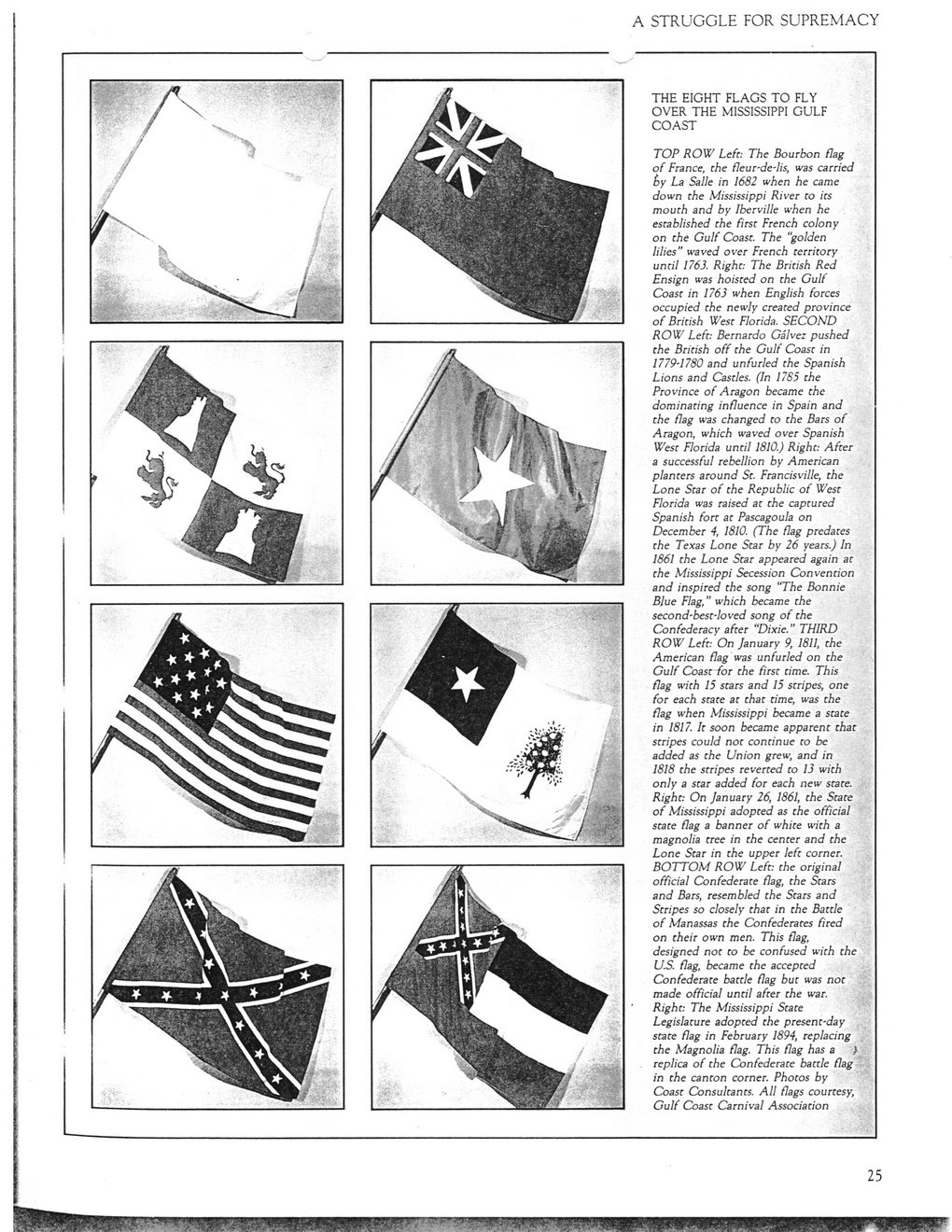This text was obtained via automated optical character recognition.
It has not been edited and may therefore contain several errors.
A STRUGGLE FOR SUPREMACY THE EIGHT FLAGS TO FLY OVER THE MISSISSIPPI GULF COAST TOP ROW Left: The Bourbon flag of France, the fleur-de-lis, was carried t>y La Salle in 1682 when he came down the Mississippi River to its mouth and by Iberville when he established the first French colony on the Gulf Coast. The "golden lilies?? waved over French territory until 1763. Right: The British Red Ensign was hoisted on the Gulf Coast in 1763 when English forces occupied the newly created province of British West Florida. SECOND ROW Left: Bernardo Galvez pushed the British off the Gulf Coast in 1779-1780 and unfurled the Spanish Lions and Castles. (In 1785 the Province of Aragon became the dominating influence in Spain and the flag was changed to the Bars of Aragon, which waved over Spanish West Florida until 1810.) Right: After a successful rebellion by American planters around St. Francisville, the Lone Star of the Republic of West Florida was raised at the captured Spanish fort at Pascagoula on December 4, 1810. (The flag predates the Texas Lone Star by 26 years.) In 1861 the Lone Star appeared again at the Mississippi Secession Convention and inspired the song "The Bonnie Blue Flag,? which became the second-best-loved song of the Confederacy after ?Dixie." THIRD ROW Left: On January 9, 1811, the American flag was unfurled on the Gulf Coast for the first time. This flag with 15 stars and 15 stripes, one for each state at that rime, was the flag when Mississippi became a state in 1817. It soon became apparent that stripes could not continue to be added as the Union grew, and in 1818 the stripes reverted to 13 with only a star added for each new state. M Right: On January 26, 1861, the State ffc of Mississippi adopted as the official ?IS state flag a banner of white with a magnolia tree in the center and the Lone Star in the upper left corner. ^ BOTTOM ROW Left: the original /v official Confederate flag, the Stars and Bars, resembled the Stars and Stripes so closely that in the Battle of Manassas the Confederates fired on their own men. This flag, designed not to be confused with the ; U.S. flag, became the accepted Confederate battle flag but was not made official until after the war. 1 Right: The Mississippi State ~ Legislature adopted the present-day state flag in February 1894, replacing the Magnolia flag. This flag has a ) replica of the Confederate battle flag?& in the canton corner. Photos by Coast Consultants. All flags courtesy, \ Gulf Coast Carnival Association , %

Flags the-Eight-Flags-To-Fly-Over-the-Mississippi-Gulf-Coast